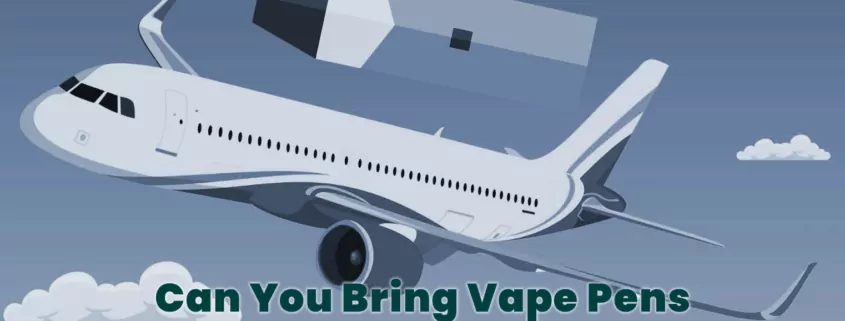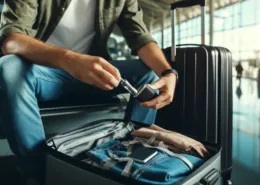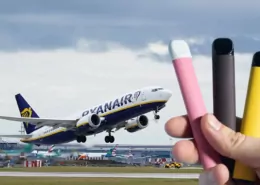Flying with Your Vape – Can You Bring Vapes on Plane?
Planning a trip and wondering, “Can I take my vape on a plane?” It’s a common question for many travelers. Navigating the rules for flying with e-cigarettes, vape pens, and e-liquids can seem complex, but with the right information, it’s entirely manageable. This comprehensive guide will walk you through everything you need to know about traveling with your vaping devices in 2025, covering TSA and FAA regulations, airline-specific policies, international considerations, and practical tips for a hassle-free journey. As vaping regulations can change, staying updated is key, and this guide aims to provide the most current and reliable information available.
Key Highlights: Traveling with Vapes
Before we dive into the specifics, here are the absolute must-knows for any vaper planning to fly:
- THC/CBD Caution: Transporting THC vape products is federally illegal in the U.S. and carries significant legal risks. CBD product legality varies internationally.
- Carry-On Only for Devices & Batteries: All vaping devices (e-cigarettes, vape pens, mods) and any spare lithium batteries must be in your carry-on luggage or on your person. They are strictly forbidden in checked baggage.
- No In-Flight Vaping or Charging: Using or charging your vape device or its batteries at any time while on the aircraft (including in lavatories) is illegal and strictly prohibited by all airlines.
- E-Liquids Follow Liquid Rules: Vape juice/e-liquids in your carry-on must adhere to the TSA’s 3-1-1 liquids rule (containers 3.4oz/100ml or less, in a single quart-sized clear bag).
- International Laws Vary Drastically: Vaping laws differ significantly worldwide. Some countries have outright bans on importation or use, with severe penalties. Always research your destination’s laws.
- Prevent Accidental Activation: You must take measures to prevent your device from accidentally turning on during transport.

Can You Bring Your Vape on a Plane?
Yes, you absolutely can bring your vape on a plane, but there are strict rules you must follow. The Transportation Security Administration (TSA) and the Federal Aviation Administration (FAA) are clear: all e-cigarettes, vaping devices, vape pens, mods, and disposable vapes must be transported in your carry-on luggage or on your person. They are strictly prohibited in checked baggage.
Why the Carry-On Only Rule?
The primary reason for the strict carry-on-only rule for vaping devices and their lithium batteries is fire safety. This is a non-negotiable regulation enforced by aviation authorities worldwide, including the FAA and theTSA in the United States.
Lithium-ion and lithium-metal batteries, which power virtually all vaping devices, can pose a fire hazard if they are damaged, short-circuited, improperly packaged, or defective. This can lead to a phenomenon called “thermal runaway,” where the battery overheats, potentially leading to smoke, fire, or even an explosion. The FAA identifies these batteries as a leading cause of in-flight lithium battery incidents.
If such an event were to occur in the cargo hold (where checked luggage is stored), it would be incredibly difficult to detect and extinguish quickly, posing a catastrophic risk to the aircraft and everyone on board. By requiring these devices and their batteries to be in the cabin, any malfunction or overheating can be identified and addressed much more rapidly by the flight crew, who are trained for such emergencies.
Packing Your Vape Device and Batteries Safely
The TSA is explicit: all electronic smoking devices and spare lithium batteries must be in your carry-on. When packing:
- Device in Carry-On: Your vape pen, mod, or disposable vape must be in your carry-on bag or on your person (e.g., in a pocket).
- Prevent Accidental Activation: The TSA and FAA require you to take “effective measures” to prevent your device’s heating element from accidentally activating. This means:
- Turning the device completely off (if it has an on/off switch).
- Using any safety lock features your device may have.
- Storing the device in a protective case to prevent buttons from being pressed.
- If possible and practical, removing the battery from the device and storing it separately in an approved battery case.
- Spare Battery Protection: All spare lithium batteries must also be in your carry-on and must be individually protected to prevent short circuits. This means:
- Keeping them in their original retail packaging.
- Covering the battery terminals with non-conductive tape.
- Placing each battery in a separate plastic bag or a dedicated battery case/sleeve.
- Never let spare batteries come into contact with metal objects like keys, coins, or jewelry in your bag.
- Battery Specifications: Be aware of battery limits. Lithium-ion batteries generally must not exceed 100 Watt-hours (Wh). Most vape batteries are well within this. For lithium metal batteries, the limit is typically 2 grams of lithium content per battery. Passengers may carry up to two larger spare lithium-ion batteries (101–160 Wh) but usually require airline approval beforehand.
If TSA discovers vaping batteries in your checked luggage, it can lead to delays, confiscation, and missed flights. Always double-check your packing.
Packing Your E-Liquids and Pods Carefully
Your vape juice, e-liquids, and pre-filled pods are subject to the TSA’s standard 3-1-1 liquids rule for carry-on baggage:
- Containers must be 3.4 ounces (100 milliliters) or less per item. This applies to each individual bottle or pod.
- All these liquid containers must fit comfortably into one clear, quart-sized, zip-top bag.
- Each passenger is limited to one such bag for all their liquids, aerosols, gels, creams, and pastes.
Tips for Packing E-Liquids:
Tips for Packing E-Liquids:
- Prevent Leaks: Cabin pressure changes during flight can cause vape tanks and e-liquid bottles to leak. To minimize this, consider:
- Traveling with tanks that are empty or only partially full.
- Ensuring bottle caps are tightly secured.
- Placing e-liquid bottles and tanks inside an additional small, sealed plastic bag within your main quart-sized liquids bag for extra protection.
- Checked Luggage for Larger Quantities: If you need to bring more e-liquid than allowed in your carry-on, you can pack larger quantities in your checked baggage. However, ensure these are also well-sealed to prevent leaks that could damage your belongings.
Disposable Vapes
Disposable Vapes
Disposable vapes are subject to the exact same rules as reusable vaping devices: they must be in your carry-on luggage, cannot be used or charged on the plane, and you must take measures to prevent accidental activation (often by keeping them in their original packaging if sealed, or a protective case). The e-liquid is contained within, but for multiple disposables, ensure you are within reasonable personal use quantities that don’t suggest intent to distribute, especially when entering countries with strict import rules.
Can You USE Your Vape on a Plane?
While you can bring your vape onto the aircraft, using or charging your vape at any time while on the plane is strictly forbidden by all airlines worldwide. This ban includes the cabin, lavatories (which are often equipped with sensitive smoke/vape detectors), and during boarding or deplaning.
Attempting to “stealth vape” is a serious offense. Vaping aerosol can trigger smoke detectors, and tampering with these detectors is a federal crime. Violating this rule (49 U.S.C. § 46504) can lead to severe consequences, including:
- Substantial fines (ranging from $500 to potentially over $25,000).
- Being met by law enforcement upon landing and potential arrest.
- Bans from future travel with the airline.
- Flight diversions in serious cases.
Respecting this regulation is crucial for the safety and comfort of all passengers and crew.
Can You Vape in the Airport?
If you need to vape before your flight or during a layover, you must only do so in designated smoking/vaping areas. These are increasingly rare inside airport terminals past security.
- Indoor Prohibitions: Most airports worldwide, including virtually all in the U.S. and UK, ban smoking and vaping inside the terminal buildings once you pass through security.
- Designated Outdoor Areas: Designated areas are typically located outside the terminal buildings, often some distance from the entrances. Check airport signage or official airport websites for locations.
- International Airport Variations: Policies vary greatly. Some international airports may have enclosed, ventilated smoking/vaping lounges post-security, but these are becoming less common. Others may have no facilities at all.
Always assume vaping is prohibited unless you are in an explicitly marked designated area. When using these areas, be considerate of others.
Airline-Specific Policies: Beyond TSA and FAA Basics
While TSA and FAA provide baseline U.S. rules, individual airlines may have slightly different or more detailed policies. Always check the specific rules of the airline you are flying with well before your travel date. This information is usually on their website under “restricted items” or “dangerous goods.”
Examples (verify current policies as they can change):
- American Airlines: Electronic cigarettes are not permitted in checked baggage, however you can travel with them in your carry-on baggage. Smoking is never allowed onboard any flight.
- Delta Air Lines: E-cigarettes can be brought as carry-on items only. Using or recharging the device while on board the aircraft is not permitted.
- United Airlines: E-cigarettes and vapes can’t be used or charged onboard the plane. Pack them in your carry-on.
- Southwest Airlines: Spare lithium batteries for portable electronic devices and cigarette lighters must be removed from checked or gate-checked baggage and carried onboard the aircraft.
- JetBlue: Remove all electronic cigarette and vaping devices from carry-on bags if checked at the gate or planeside.
International carriers also have specific rules:
- EasyJet: All electronic cigarettes and vaping devices must be carried in the cabin, re-charging is strictly prohibited and the device must be completely switched off. A maximum of two spare batteries in carry-on baggage is permitted.
- British Airways: Any smoking/vaping device must be placed in your hand baggage and carried in the cabin. They must also be packaged to prevent accidental activation.
- Emirates: E-cigarettes (including e-cigars, e-pipes, Electric Portable Incense (Perfume) Burners or other personal vaporizers) containing batteries must be individually protected to prevent accidental activation.
- Qantas Airlines: The use and charging of all e-cigarettes and other personal vaporisers are not permitted onboard an aircraft.
- Ryanair: Passengers are permitted to bring e-cigarettes into the cabin, though use of e-cigarettes (like real cigarettes) is strictly banned.
Refer to the FAA’s “PackSafe” webpage for general guidance on hazardous materials.
Ecigator is one of the well-known vape brands spun off from FM Technology Co., Ltd, it’s an ISO-certified disposable vape manufacturer for OEMs, ODMs, and OBM since 2010. The founder team comes from top firms with more than 10 years of experience in the vaping industry and has devoted thousands of hours to providing users with a better and better experience.

18K Disposable Pod Kit
Disposable Pod Kit – 18ml changeable pod with 650mAh rechargeable battery.
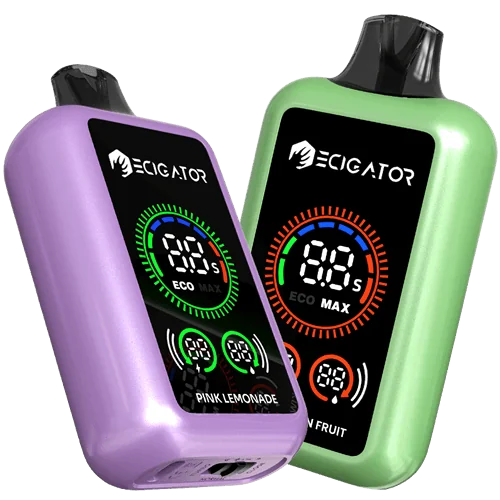
20K with Large Screen
20000 Puffs Disposable Vape with large screen. Normal and Boost working modes.
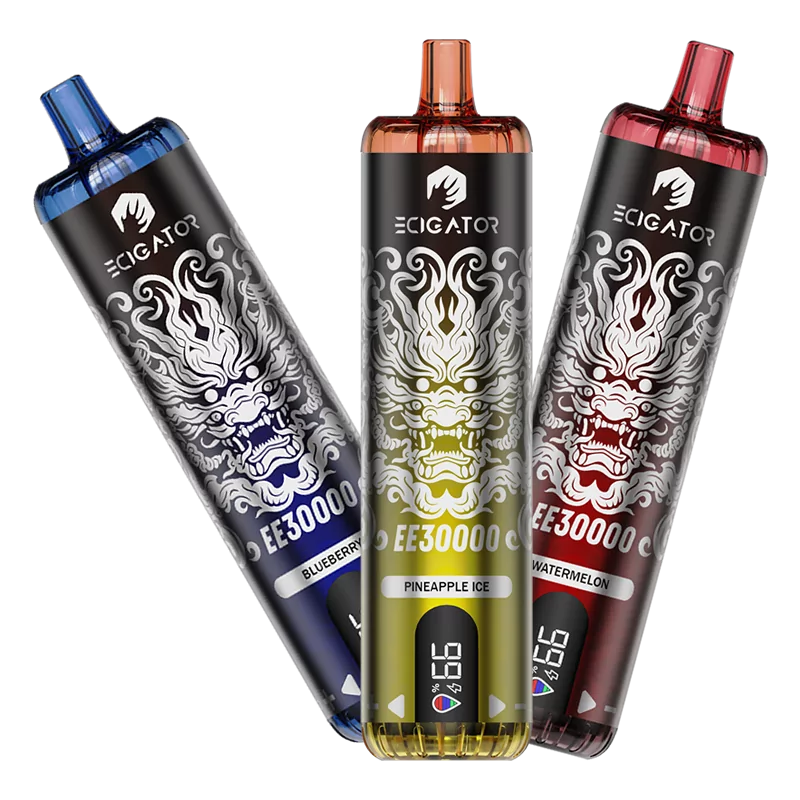
30K DTL Disposable
30K Puffs DTL(Directly to Lung) disposable vape with airflow control and screen.
A Critical Warning: CBD and THC Vaping Products
This is an area requiring extreme caution. While TSA’s primary focus is on security threats, they are required to report suspected violations of law, including possession of illegal substances, to law enforcement.
- THC Products: Marijuana and cannabis-infused products, including vape cartridges containing THC above the 0.3% Delta-9 THC federal limit, are illegal under U.S. federal law. Carrying them across state lines or internationally can lead to arrest, confiscation, significant fines, and severe legal consequences, regardless of legality in your departure or arrival state/country. Federal law governs air travel.
- CBD Products: While hemp-derived CBD products with less than 0.3% THC are federally legal in the U.S., their legality varies significantly in other countries. It is crucial to verify the laws at your destination and any layover countries. Even if a CBD product is legal, residue in a device previously used for THC could cause issues.
Given the risks, it’s often wisest to avoid traveling with THC vape products and to be very cautious and well-researched if traveling with CBD vape products internationally.
International Vape Travel: A Minefield of Varying Laws
Traveling internationally with vaping products requires extreme diligence, as laws vary dramatically from country to country. What is perfectly legal in your home country could result in severe penalties elsewhere.
Countries with Strict Bans or Severe Restrictions
Many countries have complete bans on the sale, importation, possession, and/or use of e-cigarettes and vaping products. Attempting to bring a vape into these countries, even for personal use, can lead to confiscation, hefty fines, deportation, or even imprisonment. Examples of countries with known strict bans or severe restrictions include (but are not limited to, and laws can change rapidly – ALWAYS VERIFY BEFORE TRAVEL):
- Thailand
- Singapore
- India
- Brazil
- Mexico (ban on import/sales often extends to travelers)
- Qatar
- Brunei
- Cambodia
- Argentina
- United Arab Emirates (Dubai and other emirates have complex, often restrictive rules despite some recent legalizations for sale under specific conditions).
- Taiwan
Countries with Regulations (Nicotine Strength, Flavors, Sales)
Other countries permit vaping but have specific regulations you must be aware of:
- Nicotine Strength Caps: The European Union (TPD regulations) and the United Kingdom cap nicotine strength in e-liquids at 20mg/mL. This is significantly lower than common strengths in the U.S. (e.g., 50mg/mL salt nicotine).
- Flavor Bans/Restrictions: Some countries or regions within countries have banned or restricted flavored e-liquids, often allowing only tobacco or menthol.
- Sales Restrictions: Access to vaping products might be limited to licensed tobacconists or specialized vape shops, which may not be readily available.
- Public Vaping Restrictions: Even where legal, strict rules often govern where you can vape publicly.
- Japan: A unique case where e-liquids containing nicotine are generally prohibited (considered medicinal products requiring approval), but nicotine-free vapes and heated tobacco products are more common.
Research is Non-Negotiable: How to Check Destination Laws
Before traveling internationally with vape gear:
- Consult the official government tourism or health websites for your destination country and any layover countries.
- Check the website of your country’s embassy or consulate in the destination country.
- Look for information from reputable international travel advisories.
- Be aware that online forums or anecdotal advice can be outdated or inaccurate. Prioritize official sources.
If in doubt, it may be wisest to leave your vape gear at home when traveling to destinations with unclear or highly restrictive laws.
Practical Tips for Smooth Vape Travel
- Packing Essentials: Bring spare coils/pods, your charging cable (but remember, no in-flight charging), and consider a dedicated protective case for your device and batteries.
- Device Care: Fully charge devices before leaving, but don’t carry them with a full charge if storing for a long period. Protect e-liquids from extreme temperatures and direct sunlight.
- Vaping Etiquette Abroad: Be mindful of local customs. If unsure, ask before vaping in public or semi-public spaces. Be discreet and avoid creating large vapor clouds.
Alternative Nicotine Options for Flights
Since vaping on planes is prohibited, consider TSA-approved alternatives like nicotine gum, lozenges, or patches to manage cravings during long flights. Check local regulations if flying internationally with these products.

ECIGATOR
Ecigator is one of the well-known vape brands spun off from FM Technology Co., Ltd, it’s an ISO-certified disposable vape manufacturer for OEMs, ODMs, and OBM since 2010. The founder team comes from top firms with more than 10 years of experience in the vaping industry and has devoted thousands of hours to providing users with a better and better experience.
Regulatory Landscape and Future Outlook
Aviation authorities like the FAA and ICAO continually review and update regulations concerning dangerous goods, including devices with lithium batteries. The FAA even provides resources like its “Vapes On A Plane Marketing Kit” to help educate passengers and retailers. Manufacturers are also encouraged to integrate safety features like physical battery disconnects or pressure-activated switches. Staying informed through official channels like the FAA’s PackSafe website is advisable.
Conclusion: Travel Confidently and Responsibly with Your Vape
Traveling with your vape is entirely feasible with proper knowledge and preparation. By understanding and strictly adhering to TSA and FAA regulations, specific airline policies, and the often complex laws of your international destination, you can ensure a smooth and compliant journey. Prioritizing safety, respecting fellow travelers and local regulations, and staying informed are the cornerstones of responsible vape travel. This approach not only enhances your personal travel experience but also contributes positively to how the vaping community is perceived worldwide.
Frequently Asked Questions (FAQ)
-
Can I pack my vape in my checked luggage?
No, absolutely not. All electronic smoking devices, including vapes, e-cigarettes, and any accompanying lithium batteries, must be in your carry-on baggage or on your person. This is a strict TSA and FAA regulation due to the fire risk posed by lithium batteries in the cargo hold.
-
What are the consequences if I vape or charge my device on the plane?
Using or charging your vape on an aircraft is a federal offense in the U.S. and prohibited worldwide on commercial flights. Penalties can include substantial fines (often $500 to $4,000 or more), immediate removal from the flight upon landing, being banned by the airline, and potentially arrest and prosecution.
-
Are disposable vapes allowed, and do they follow the same rules?
Yes, disposable vapes are allowed. They are subject to the exact same rules as reusable vaping devices: they must be in your carry-on luggage, cannot be used or charged on the plane, and you must take measures to prevent accidental activation.
-
What are the limits for vape juice or e-liquids in carry-on?
E-liquids must follow the TSA’s 3-1-1 rule. This means containers must be 3.4 ounces (100 milliliters) or smaller, and all such containers must fit into a single, clear, quart-sized zip-top bag. This bag must be presented for screening separately.
-
Can I bring THC or CBD vape cartridges on a plane?
Bringing THC vape products on a plane is highly risky and generally illegal under U.S. federal law (for products with >0.3% Delta-9 THC). Discovery can lead to severe legal consequences. For CBD products, while federally legal in the U.S. if hemp-derived (<0.3% THC), international laws vary greatly. Always research the laws of your destination and any transit countries meticulously.
Disclaimer: Regulations can change. This guide provides general information based on current understanding (as of late 2024/early 2025 outlook). Always verify with official TSA, FAA, airline, and destination country sources before traveling.
- Austria Plans to Ban Disposable E-Cigarettes - August 5, 2025
- Vaping vs. THC Drinks: Which Cannabis Option Is Right for You? - August 4, 2025
- Colombia’s New Vape Law: A Reality Check on Enforcement - August 4, 2025

